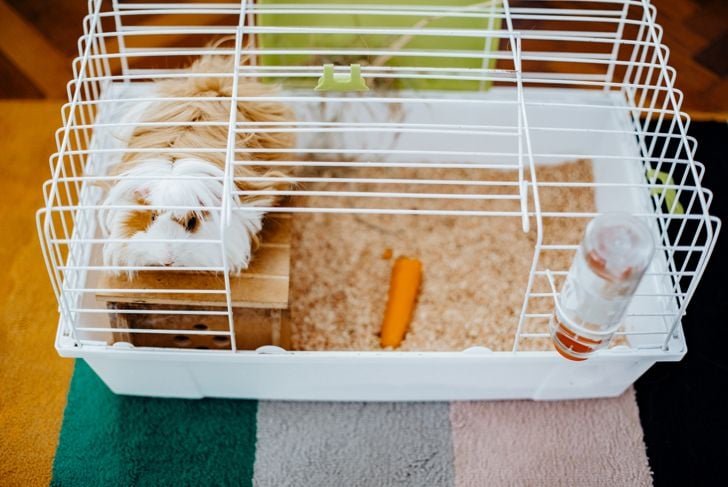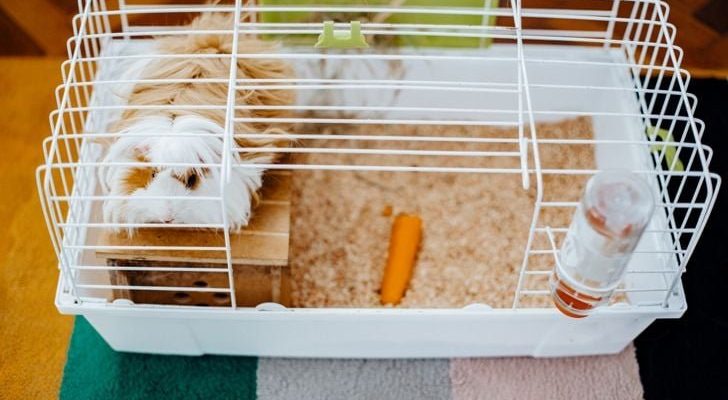
Imagine this: you’ve just brought your new Peruvian guinea pig home. It’s a curious little bundle of joy, and you’re excited to nurture it. But then you start wondering, “What do I feed it? How should I set up its cage? Does it need a buddy?” Well, don’t worry! I’m here to break it all down for you, step by step. From their special diets to creating a cozy living space, and even figuring out their social needs, you’ll find everything you need to ensure your guinea pig feels right at home.
Understanding Your Peruvian Guinea Pig’s Diet
When it comes to feeding your Peruvian guinea pig, think of it as preparing a balanced meal for a toddler—nutritious, fun, and colorful! These little guys are herbivores, which means their diet consists mainly of plants. Their staples should include high-quality hay, fresh veggies, and specially formulated guinea pig pellets.
Hay is crucial. It helps their digestive system and keeps their teeth in check. You can offer timothy hay or orchard grass hay on a daily basis. Don’t skimp out; they should have unlimited access to hay throughout the day.
Now, for the veggies—this is where you can get creative! You can feed them leafy greens like romaine lettuce, cilantro, and bell peppers. Always wash the veggies, and introduce them slowly to avoid any tummy troubles. A good rule of thumb is to provide about a cup of fresh vegetables per guinea pig each day.
And let’s not forget about pellets! Choose a brand that is high in vitamin C, as guinea pigs can’t produce this essential vitamin on their own. A tablespoon or two per day should suffice. You might be wondering about fruits—sure, they can have a small slice of apple or a few pieces of berries as an occasional treat, but be cautious not to overdo it, as fruits are high in sugar.
Setting Up The Perfect Cage For Your Guinea Pig
Creating a cozy and safe home for your Peruvian guinea pig is key to keeping them healthy and happy. Their cage should mimic a little sanctuary, giving them space to explore, hide, and play. Aim for a cage that’s at least 7.5 square feet for one guinea pig, ideally larger if you have more than one.
Inside the cage, think of it like a mini-playground. You’ll want to include hiding spots—like small tunnels or igloos—where your guinea pig can retreat when they need a moment of peace. They feel safer in enclosed spaces!
Don’t forget the bedding! Use materials like aspen shavings or paper-based bedding. Avoid cedar or pine shavings, as they can be harmful to their health. The bedding should be deep enough (at least 2-3 inches) for them to burrow and feel comfortable.
You might also want to add some fun toys to keep them entertained. Chew toys, tunnels, and even fresh branches from safe trees (like apple or willow) can do wonders. Remember to change the bedding regularly and clean the cage to keep their environment fresh.
Social Needs of Peruvian Guinea Pigs
Here’s the thing: Peruvian guinea pigs are social creatures. They thrive on interaction, both with humans and their fellow guinea pigs. If you’re considering getting one, think about adopting a pair—these little ones can get lonely. They often communicate through a range of sounds, like wheeking or purring, especially when they’re excited or want attention.
Spending time with your guinea pig is essential. You can create a bond through gentle handling and regular playtime outside the cage. Maybe take them out for a little exploration in a safe area of your home. Just be sure to supervise them, as curious guinea pigs can get into mischief!
If you do decide to get more than one guinea pig, it’s important to introduce them properly. It can take some time for them to get used to each other, so be patient and let them have their space at first. Watching them interact can be a joy—it’s like seeing a little friendship blossom!
Health and Grooming Essentials
Keeping your Peruvian guinea pig healthy involves regular check-ups and grooming. Make it a habit to take them to a vet that specializes in small animals at least once a year. They can catch any health issues before they become serious, and you’ll feel reassured knowing your furry friend is in tip-top shape.
Now, let’s talk grooming. Peruvian guinea pigs have long hair that can get tangled or matted. Regular brushing is essential—ideally, a few times a week. Use a soft-bristled brush or a comb to gently detangle any knots. It’s a great way to bond with your pet while keeping them looking fabulous!
You might also need to trim their nails every few weeks. If they run around on hard surfaces, their nails can wear down naturally, but it’s still a good idea to keep them neat. And don’t forget about their dental health! Providing chew toys can help wear down their ever-growing teeth.
Common Problems and Troubleshooting
Even with the best care, sometimes you might encounter issues with your Peruvian guinea pig. One of the common problems is hair loss, which can be caused by stress or certain health conditions. Make sure their environment is calm, and check for any signs of skin irritation.
Another concern could be loss of appetite. Guinea pigs are creatures of habit, and any sudden change can upset them. If they’re not eating, it could be a sign that something’s wrong. Check for signs of illness, and consult your vet if you’re worried.
Sometimes, guinea pigs can develop respiratory issues, especially if they’re exposed to drafts or harmful bedding materials. If you notice any sneezing or labored breathing, it’s best to get them checked out. The earlier you catch any problem, the better!
The Joy of Bonding with Your Peruvian Guinea Pig
Caring for a Peruvian guinea pig is not just about meeting their physical needs; it’s also about forging a connection. These little animals can be incredibly affectionate, and spending time with them can bring so much joy to your life. You might find they have unique personalities that shine through as you get to know them.
As they become comfortable with you, they might even come to recognize your voice and seek your company. Whether it’s a quiet cuddle on the couch or watching them zoom around during playtime, the bond you build will make all the effort worthwhile.
So, if you’re considering becoming a guinea pig parent—or already are—remember that these small creatures are deserving of big love. With the right diet, a cozy cage, socialization, and a sprinkle of patience, you’ll create a wonderful life for your Peruvian guinea pig that’ll bring smiles to both of you for years to come.

